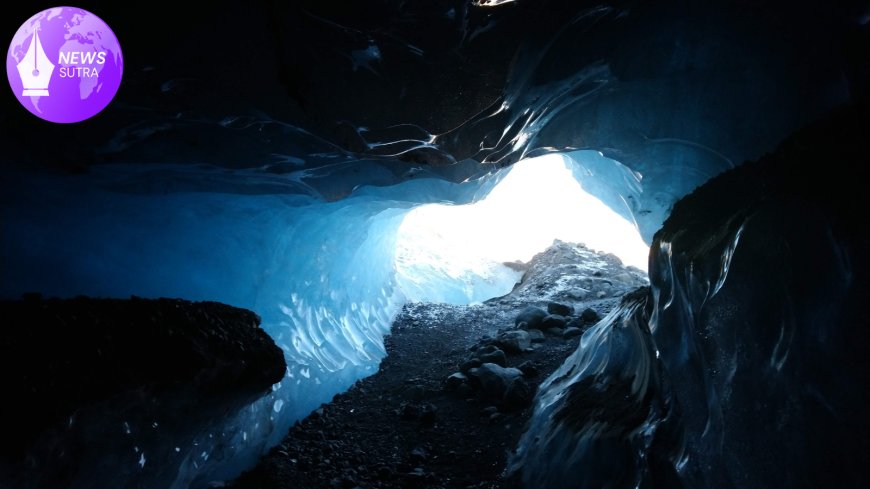332 Hidden Canyons Discovered Beneath Antarctica’s Ice: Scientists Warn of Rising Sea-Level Threats
Scientists have discovered 332 hidden submarine canyons beneath Antarctica’s ice, reshaping climate models and raising sea-level rise concerns.

Antarctica has once again stunned the scientific community. Researchers have uncovered 332 previously unknown submarine canyons hidden beneath its massive ice sheet, reshaping our understanding of how the continent drains water into the ocean and fueling concerns about future sea-level rise.
The discovery, revealed in a new study published in Nature Geoscience, relied on advanced 3D mapping and satellite-based radar imaging, offering one of the most detailed views yet of Antarctica’s subglacial landscape. Scientists say these newly identified canyons act like hidden highways, funneling meltwater and ice into the sea more efficiently than previously thought.
Mapping the Invisible World Under Ice
For decades, Antarctica’s deep structures have remained cloaked beneath kilometers of ice. But thanks to airborne ice-penetrating radar and advanced modeling techniques, researchers have been able to reconstruct the terrain with unprecedented precision.
Dr. Helen Murray, a lead glaciologist from the British Antarctic Survey, explained:
“These canyons are vast, some stretching for hundreds of kilometers. They operate as drainage routes, moving water and sediment beneath the ice. Their scale suggests Antarctica is more dynamic—and vulnerable—than we believed.”
According to the study, the largest canyon found rivals the size of the Grand Canyon in the United States, plunging deep beneath the surface and connecting interior ice sheets directly to the sea.
Why the Discovery Matters
Antarctica holds about 60 percent of Earth’s fresh water locked in its ice. The stability of this ice is critical for global sea levels. The new findings suggest that meltwater can now travel much faster through these canyons, hastening the movement of ice into the ocean.
Dr. Robert Jenkins, a climate modeler at NASA’s Goddard Space Flight Center, emphasized:
“The sheer number of these hidden channels means we may be underestimating how quickly sea levels could rise in the coming decades. Our models now need to account for these new drainage pathways.”
If Antarctic ice continues to weaken, global sea levels could rise significantly, threatening coastal cities from Miami to Mumbai.
Data-Driven 3D Mapping Insights
The researchers used a combination of satellite altimetry, ice-penetrating radar, and oceanographic models to recreate a 3D map of Antarctica’s subsurface.
-
332 submarine canyons were identified across East and West Antarctica.
-
Some measure over 250 km in length and several kilometers in depth.
-
Many connect directly to fast-flowing glaciers such as Thwaites and Pine Island, already considered “doomsday glaciers.”
The study highlights that these canyon systems may accelerate basal melting—the process where warm ocean water intrudes beneath the ice, destabilizing it from below.
Voices from the Frontline
Local communities in coastal regions are already preparing for the consequences. In Florida, urban planners are racing to update infrastructure. In Bangladesh, farmers are watching saltwater creep further inland.
Sarah Thompson, an environmental activist in New Orleans, told NewsSutra:
“We often think of Antarctica as far away, but its ice decides our future. Every new discovery like this is a warning that time is running out.”
Broader Implications
The research underscores two urgent realities:
-
Climate Change Acceleration – Warmer oceans are melting Antarctic ice faster, fueling sea-level rise.
-
Policy and Preparedness – Coastal cities worldwide must adapt sooner than anticipated.
Some scientists are calling for more international monitoring stations in Antarctica to study real-time changes, while policymakers debate stronger carbon-reduction commitments to slow global warming.
High-Quality References for Further Reading
-
National Snow and Ice Data Center – Comprehensive research on ice sheets and glaciers.
-
NASA Earth Observatory – Satellite data on Antarctica and climate science.
Conclusion
The discovery of 332 hidden canyons beneath Antarctica’s ice is more than a scientific milestone—it is a global alarm bell. These formations will shape the continent’s response to warming oceans and accelerate sea-level rise, placing millions of people at risk.
For researchers, it is a call to refine models and predictions. For policymakers, it is another reminder that the cost of inaction will be measured not only in dollars but in human displacement and environmental upheaval.
Antarctica, once thought of as static and frozen, is proving to be alive, shifting, and increasingly unstable in the face of climate change.











